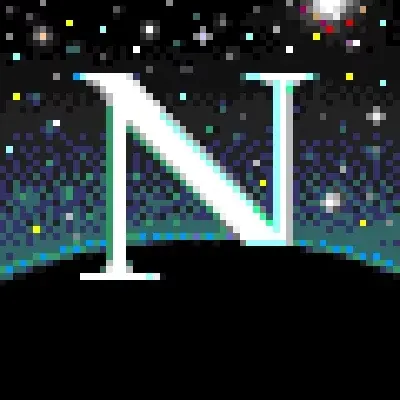I’d stay away from Manjaro, personally. They’ve had a number of organisational and security fuck-ups that in my opinion makes it hard to take them seriously. Once is forgivable, but when they make the same mistake 3+ times it’s just completely unforgivable and unprofessional.
Plus there’s the whole “we hold Arch packages back two weeks but not AUR packages” - which means there could be dependency issues if you like installing stuff from AUR. In fairness though, they do request that users do not install AUR software on their site, so people do get warned about that.
Endeavour is good. If I was to go back to an Arch distro, it’s what I’d use hands-down. Fundamentally just Arch with a better installer and a nice theme.
I’d also consider something Fedora based, like Fedora (duh), or Bazzite (if you want an atomic/immutable OS). Up-to-date, extensively tested. Bazzite even allows you to install it with out-of-the-box Gamescope support (in simple terms, you get some of the performance options and performance overlays that the steam deck has).
I can vouch for Fedora, I used plenty of distros from Arch to Ubuntu (and many of it’s forks) and even weird outliers like Solus and Fedora is the most boring distro out of all of them, and I mean that in the best way. To quote a certain Todd: “It just works!” Do note you will probably want to enable RPM fusion (basically mandatory if you use nVidia) to get access to useful non open source and license encumbered packages Fedora can’t ship by default (like media codecs). Other than that, install Steam and whatever other launchers you want and enjoy a boring, reliable distro.
If “more stable Arch” is why you’re considering Manjaro, consider openSUSE Tumbleweed. They’re rolling like Arch, but openQA and rebuilding everything after a compiler update seems to catch a number of issues.
If you want easier to install Arch, consider EmdeavorOS.
Manjaro is pretty much never the right answer.
I just installed EndeavourOS on a virtual machine to see what it was like. I can confirm, it’s easy. It’s definitely similar to other distros. Didn’t feel like Arch at all.
Issues with using AUR was enough for me to stay clear and not recommend to people.
Not that I’d necessarily recommend Arch as something for someone just getting into Linux or anything, but if you’re deadset on using something derivative, I would just recommend going with Arch.
This install scriot makes it no harder to install than anything. And the wiki is robust.
However, if you don’t want to learn how your OS works, and troubleshoot fringe issues, don’t use Arch.
My route into Linux I wouldn’t tell others to take.
I can’t disagree. I love Manjaro on one of my devices, a shitty old HP laptop. It runs better than any other distro on it, and it’s smooth as butter (even for light gaming) even though the hardware is terrible.
But.
I’ve had to reinstall more than once because things broke while installing upgrades, lol
deleted by creator
Bazzite. I’ll now accept my ban from the moderators.
EndeavourOS is what got me to daily drive Linux finally.
The installation is easy, it’s got sane defaults and pre-installs most common dependencies.
Hannah Montana Linux
Ah, a connoisseur.
A distro that comes with the latest video drivers.
I’d give Nobara a try. I’ve been using it for about 2 years and it’s been pretty seamless. Already comes with a bunch of Linux gaming related software, like Steam, Lutris, Proton-up, etc.
It also has a bunch of gaming performance patches automatically installed.
If you’re not technically inclined at all and want a console style experience, Bazzite is probably your best bet.
All that said, most mainstream distros will give you a fine gaming experience, you just might have to do some manual fiddling and installing yourself depending on the distro and the games you’re playing.
I use Nobara and I recoomend it to all my friends (the ones who like linux anyway).
while its true that really no linux distro will have any significant better game performance than another, Nobara stands out to me because its made by GloriousEggroll (the same guy who makes the protonGE patches for steam) for his dad so that his dad can have a simple no-fuss gaming computer they can use to game together.
the specific things I like about it are how it helps you get the correct graphics drivers and game/controller fixups at installation, and comes with steam preinstalled. I also like how the Nobara software updater also handles flatpaks as well as regular packages, its my one stop graphical (or CLI) shop for downloading or updating any new programs.
I also like its themes and that its based on Fedora.
Another vote for Nobara.
Everything is packed in and ready to go. No having to install extra shit, no having to download and compile shit. Its just all there, and it works.
And has been not only the smoothest, easiest experience with linux gaming that I’ve had… but just in general the everyday usability is smooth, easy and great too.
My only significant complaint is that all the tech help is on a discord. Which means its not indexable, archivable, or searchable via your search engine of choice… so if you don’t have discord, or if the discord goes away… So does all the knowledge base and help. but thats a complaint I have about discord in general.
Archlinux
Like others have said, Bazzite is a good option.The auto driver install is amazing. Had no problems with Bazzite, not like PopOs(some Driver issues with older NVDIA GPU). Only thing is the ISO’s are really large (>6Gb).
I have good experiences with both bazzite and nobara.
Bazzite is an immutable OS though. So installing additional packages requires you layering them on top. It works differently than the traditional OS. Though if you just use it for gaming and browsing you’ll likely never notice the difference.
Garuda also markets itself as a mainly gaming distro. I don’t have any real experience with that. I tried it, but it didn’t feel like it was for me.
I’ve happily used the former two though.
Personally gaming on Fedora without trouble. I’ve heard good things about Nobara - https://nobaraproject.org/author/gloriouseggroll/
I run endeavourOS and has done so for a few years already. I love it. For convenience sake I recommend you install flatpak and a kde-discover/gnome-software just for your everyday apps.
I game on a 1070ti and Nvidia is working fine for me on x11 Gnome. Give it a try :)
In summary: Choose what you want, what you have the easiest time working with.
A bit more into my own opinion-
Personally, I use Ubuntu as my gaming and productivity distro. It’s super easy to install and does everything for you (you can customize aspects of installation if you want). I’ve had issues installing Arch-Based distros on my rig, even with UEFI off. Arch-Based distros need more technical knowledge; I’ve found myself unable to dig too deep in the guts of certain aspects. The installer is truly hands-on, and due to the UEFI issue, my manual partitioning failed. It was specifically the EndeavourOS installer, which had this particular issue. Completely deleted my ability to boot Ubuntu, leading to a frantic night of reinstalling Ubuntu. I’d only suggest anything Arch related if you’re comfortable with learn by doing or have advanced experience with the inner workings of software.
For me, Ubuntu is a good middle ground that gives the user room to play, but also a stable base to build on top of. Valve’s Proton Compatibility makes gaming on most distros fairly easy because a lot of the work is done for a user. I’ve run so many games on Ubuntu just fine using Proton. There are exceptions for older games, which have different methods to get them running on Linux.
You can also enable Flatpak on Ubuntu (using commands to install the proper dependencies to make Flatpaks work on your system). There are so many options aside from using Debs and Snaps on Ubuntu. Snaps have gotten much better over time, I find myself not having any noticeable issues now since Canonical has worked heavily on the installer.
The distro I end up recommending more, second to Ubuntu, is Linux Mint because of their onboarding new users experience. It’s just as easy as Ubuntu to use, a bit aesthetically challenged though as Mint really embraces that default older Windows look. However, that familiarity helps ease new users into a Linux Distro.










